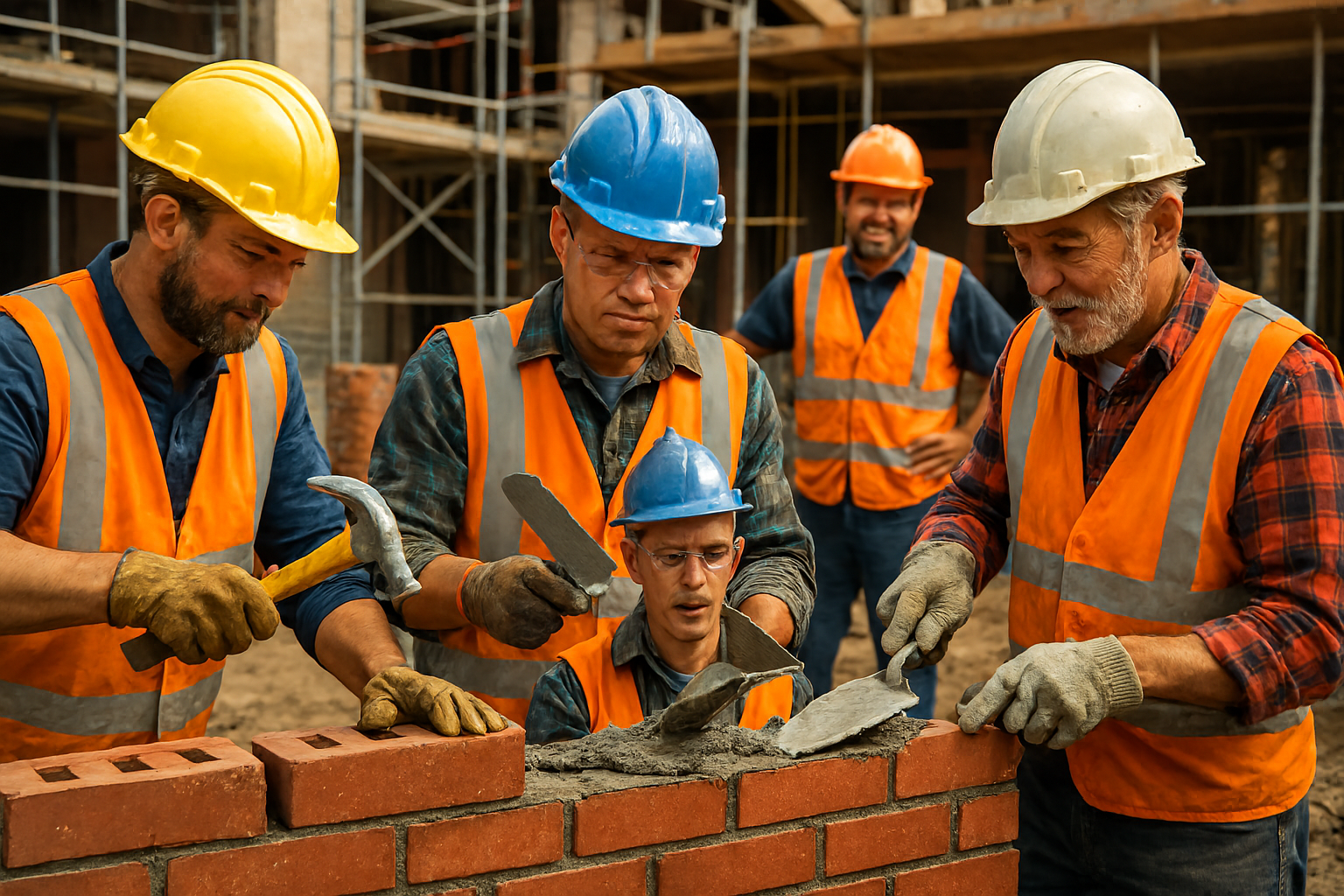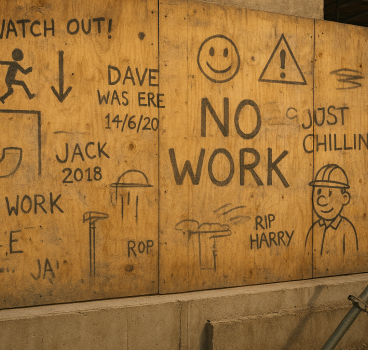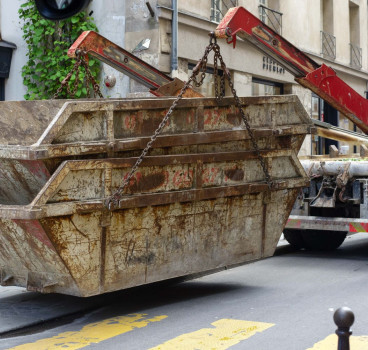The strange nicknames for construction trades through history
Construction has always been a world with its own language. Walk onto a building site today and you’ll hear slang that outsiders struggle to decipher, from “sparkies” for electricians to “chippies” for carpenters. But the habit of giving trades quirky, unusual, and sometimes downright strange nicknames is far older than the modern jobsite. Across history, builders, masons, and craftsmen have earned titles that reflected not only their tools and skills, but also the culture of the times. These names reveal how trades were viewed, how workers saw themselves and how humour has always played a role in tough manual labour.
Nicknames have served many purposes on the jobsite. Some were shorthand, making communication faster in noisy environments. Others were playful jabs, reflecting the banter and camaraderie that helped workers get through long days of hard graft. In some cases, the nicknames even carried a touch of respect, honouring the traditions of trades that were central to building towns, cities and nations. Taken together, they offer a fascinating insight into how the culture of construction has evolved, and how much of that heritage is still alive today.
The origins of trade nicknames
The tradition of giving trades nicknames can be traced back to medieval guilds. These guilds controlled the training, quality and status of each craft and members often developed a vocabulary unique to their group. Stone carvers, for example, were sometimes known as “bankers,” not because of any connection to finance, but because they worked their stone on a bench called a banker. The name stuck and was passed down through generations.
Apprentices often received even more colourful labels. In masonry, a novice might be called a “lodge boy” or “hod carrier,” reflecting his role in carrying bricks and mortar rather than shaping them. These early nicknames were less about humour and more about hierarchy, marking out the layers of experience that defined each trade.
As construction moved from guild-controlled craft to industrialised building, the nicknames multiplied. Railways, factories and urban expansion created new roles, and with them came fresh slang that captured the character of each job. Many of these terms have since faded, but some remain instantly recognisable on building sites today.
Stoneworkers – From bankers to takers
Stonemasonry has perhaps the richest collection of old nicknames, partly because it was one of the most highly organised medieval trades. The “banker mason” was the skilled craftsman shaping stone at his bench. Alongside him might be a “setter,” whose job was to place stones into the actual building. Quarrymen, who cut the raw stone from the earth, were sometimes called “takers,” a plain, but telling nickname for those who extracted the rock in the first place.
Among apprentices, nicknames could take a harsher edge. “Snappers” was a term used in some regions for inexperienced stonecutters, mocking their tendency to break blocks through inexperience. Despite the teasing, these names often acted as rites of passage — once a worker gained enough skill, the nickname fell away, replaced by one that reflected his mastery.
Carpenters and joiners – chippies, sawdust chewers and jacks
Carpenters have long been known as “chippies,” a name that likely dates back to the 18th century. The explanation is straightforward - their work produced chips of wood everywhere they went. But that was only one of several nicknames. “Sawdust chewer” was another, both a humorous exaggeration and a nod to the clouds of dust carpenters endured each day.
Joiners, who worked with finer interior woodwork, sometimes earned the nickname “parlour men,” since their craft was often visible in more refined domestic spaces compared to the rough carpentry of building frames. In the United States during the 19th century, a travelling carpenter might simply be called a “jack,” short for “jack of all trades,” because he often turned his hand to whatever woodwork was needed.
These names reflected not just the work itself but also the social standing of the carpenter. In many communities, the chippie was seen as a dependable figure, both craftsman and problem-solver and the affectionate nicknames reflected that.
Plasterers – whitewashers and ceiling artists
Plasterers earned some of the most unusual nicknames, thanks to the visibility of their work. “Whitewashers” was one of the oldest and simplest, describing the lime-based finish that covered countless walls. In parts of England, they were also called “daubers,” referencing the mud-and-straw daub used in wattle-and-daub construction.
But plasterers who specialised in ornamental work gained more flattering titles. In Georgian Britain, when ornate ceilings and cornices were highly fashionable, some plasterers were known as “ceiling artists.” The nickname may have begun in jest, but soon became a genuine badge of pride, since such workers required exceptional skill to mould and finish elaborate designs.
Electricians and plumbers – sparkies and drips
The industrial age introduced entirely new trades, and with them came some of the most enduring nicknames. Electricians quickly became “sparkies,” a term still in widespread use today. The name captured both the danger and the fascination of working with electricity, a force that seemed almost magical when first harnessed in the late 19th century.
Plumbers, meanwhile, often found themselves saddled with the less flattering “drips” or “leaks.” These names were part teasing, part practical as plumbing failures were both common and memorable. Over time, however, the humour softened and plumbers embraced their own nicknames as part of site banter.
Roofers, tilers and brickies
Roofers and tilers developed their own set of labels. In some regions, roofers were known as “slaters,” reflecting their material of choice, while clay tile workers were “pan men.” Roofers often endured teasing nicknames based on the danger of their work, such as “skywalkers” or “highlanders.”
Bricklayers, universally known as “brickies,” carried one of the most enduring and affectionate nicknames in construction. The name emerged in the 19th century and quickly spread across English-speaking countries. Simple, direct and easy to say on a noisy site, it has outlasted many more elaborate labels.
The language of banter
What unites all these nicknames is the sense of humour and camaraderie that has always defined construction. Work on building sites has never been easy. It is physically demanding, often dangerous and exposed to the elements. Nicknames lightened the load, creating bonds between workers and giving each trade a sense of identity.

The nicknames also reinforced hierarchy and skill. Apprentices and labourers often carried less flattering names until they proved themselves, while masters and specialists earned titles that reflected their status. The language of nicknames was, in its own way, a system of recognition, marking the journey from novice to expert.
Modern echoes of old traditions
Many of these strange nicknames have faded, but echoes remain on today’s jobsites. “Chippie,” “sparkie,” and “brickie” are still instantly recognisable across Britain, Australia, and beyond. Some modern trades have even coined new nicknames, often in the same playful vein. Drywall installers in the US, for example, are sometimes called “rockers,” while steelworkers may be dubbed “ironheads.”
The persistence of this culture shows that construction, despite new technologies and methods, remains a deeply human industry. The banter, humour and shorthand language of nicknames continue to bind workers together just as they did centuries ago.
All this means that the strange nicknames of construction trades are more than just quirks of language. They are windows into the history, culture and character of one of the world’s oldest industries. From “banker masons” to “sparkies,” these names reveal how tradespeople saw themselves and how others viewed them, mixing respect, humour and sometimes gentle mockery.
In a world where construction technology is advancing at speed, the old nicknames are a reminder of continuity. Long before CAD drawings and prefabricated panels, workers gave each other names that made sense in the dust and noise of the building site. And though times change, that instinct to rename, joke and bond through language remains part of the lifeblood of construction.
Additional Articles

Is construction site graffiti a form of folk history?
Walk onto almost any construction site and you will find writing, sketches and markings that serve a purpose beyond the practical. On timber hoarding, concrete shuttering, plasterboard and steel,...
Read moreWhat construction can learn from Ant colonies about logistics and site movement
If you want to witness flawless logistics, responsive movement and coordinated planning in action, you do not need to observe a hyper-automated warehouse or a cutting-edge construction site - you...
Read more

Why everyone has a favourite skip and what it says about you
In construction, there are two universal truths – tea, of course, is essential and believe it or not, everyone - whether they are prepared to admit it - has a favourite skip. It may sound strange,...
Read more